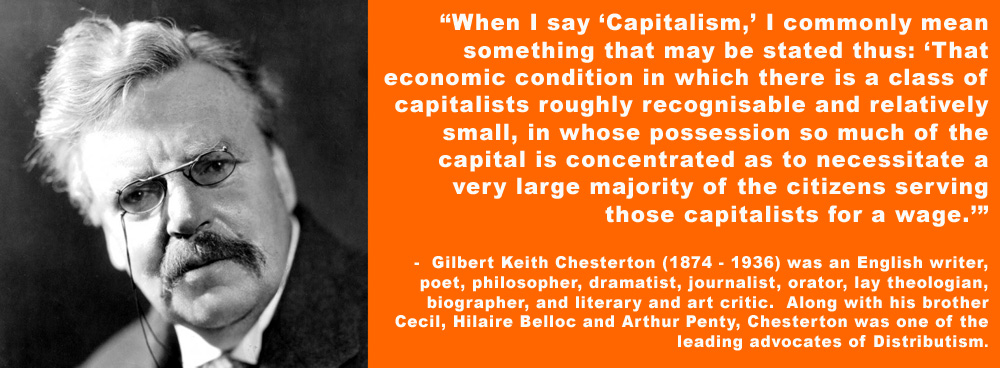Distributism remains a key influence on National Liberal ideas. This is because Distributism offers social and economic self-determination for our people – or a form of personal freedom. Distributism recognises that both socialism and capitalism are very similar because both systems place the means of production into the hands of a minority at the expense of the masses. In capitalism, land and capital are controlled by a small number of powerful business people, while in socialism that same power was held by a small number of politicians. In these scenarios, the vast majority of citizens had little control over their own economic fortunes.
We invite our readers to share their thoughts when this article is reproduced on our Facebook site https://www.facebook.com/groups/52739504313/ It goes without saying that there are no official links between Richard Howard, the Humanist Society of New South Wales and the National Liberal Party. Readers will note that this article uses the phrase ‘Third Way.’ Here it is used in a context that distinguishes it from capitalism and socialism – indeed, it refers to an economic position that goes way beyond both capitalism and socialism.
.
Distributism As A Means of Achieving Third Way Economics (Part 3)
.
“Under capitalism, man exploits man. Under communism, it’s the other way around.”
.
Distributism versus socialism
.
 In Das Kapital, Karl Marx’s analysis of capitalism led to his Labour Theory of Value – that the value of a good or service lay exclusively in the labour required to produce it. From this premise Marx concluded that those who made a profit from employing others had unjustly appropriated the surplus value of this labour – the difference between what workers were paid and what the product of their labour was sold for. Marx’s solution was the collectivization of the means of production, distribution and exchange – including property and the elimination of the supposedly parasitic class of employers and property-owners – so that workers would all receive the benefit of this surplus value rather than have it taken from them.
In Das Kapital, Karl Marx’s analysis of capitalism led to his Labour Theory of Value – that the value of a good or service lay exclusively in the labour required to produce it. From this premise Marx concluded that those who made a profit from employing others had unjustly appropriated the surplus value of this labour – the difference between what workers were paid and what the product of their labour was sold for. Marx’s solution was the collectivization of the means of production, distribution and exchange – including property and the elimination of the supposedly parasitic class of employers and property-owners – so that workers would all receive the benefit of this surplus value rather than have it taken from them. While superficially sounding reasonable, we can now look back on a century of untold misery and tyranny as various efforts to implement Marx’s ideas led not only to the destruction of whole societies, but ironically to the impoverishment and death of countless millions of the very workers that Marxism purported to champion!
The oft-repeated truism is that communism is fine in theory but fails in practice, as it does not account for human nature. In fact, I would argue that this is not only arrant nonsense but almost an oxymoron!
State socialism was a failure because Marx’s analysis was flawed – because his theory was just wrong.
Valid theories work in practice. Its invalid theories that don’t work!
Understanding where Marx went wrong is central to understanding the ideological underpinnings of distributism because the founders of the movement – Belloc, Chesterton and others – were themselves mostly socialists who developed distributism in response to the theoretical problems which they had come to see Marx’s analysis.
The most fundamental issue is the Labour Theory of Value.
That doing work is a path to improving value cannot be disputed. To take wood and brick and concrete and tiles and build a house creates a product that has greater value than that of the materials that comprise it. That making a pair of shoes from leather and stitching creates a product, which obviously has more value than the leather and stitches themselves. That creating steel out of iron ore produces a product of much greater value than the simple cost of its constituents is equally self-evident. In each case, the added ingredient is labour. So far, so good for Marx.
But let’s take this analysis a little further. How is this increased value realized? Only at the point of sale.
Up to the point when someone else is prepared to hand over the cash, that house, that steel bar, that pair of shoes has an expected value, but the value is only actually set at the point of sale. Between building a house and selling it, interest rates could rise and demand for housing drop, lowering its expected value. Between mining iron ore and smelting, new producers could flood the market with product, decreasing price by increasing supply relative to demand. In the time it takes to make several hundred pairs of shoes, fashions could change or an early start of summer shift demand to open sandals, decreasing the value of the cobbler’s shoes.
The common factor in all cases is demand. Labour contributes to value but it is demand that sets it.
And what if a deranged cobbler made two hundred left shoes rather than a hundred pairs of shoes? Labour and material contributions are the same but try to sell them and he’ll quickly discover that two hundred left shoes have a fraction of the value of one hundred pairs.
Once again all that differs is demand. Since most people have two feet, most demand is for pairs of shoes!
If demand rather than labour content is the basis of value, then Marx’s whole edifice falls apart. Employers, salesmen and property owners aren’t necessarily exploiting workers, because if demand and not labour is the basis of value, their activities are contributing to demand just as much as workers.
If the bourgeoisie aren’t by definition parasitic exploiters, then the whole concept of class warfare becomes a nonsense.
If class warfare is a nonsense then what can revolution achieve except cruelty, injustice and a changing of ruling elites?
Yet, if Marx’s analysis is wrong, the very real issues that he sought to address remain unanswered.
In an age in which State socialism has been discredited, the tendency is to see this as a vindication of what went before, to simply throw the baby out with the bathwater.
That it is untrue to say that employers, landlords and middlemen necessarily exploit workers is not to say that their involvement is exclusively beneficial. That the value of a good or service is not solely based on its labour content is not to say that, all other factors being equal, it does not substantially derive from it.
And most importantly, while I argue it is false to claim that surplus value is unjustly appropriated by those employers, landlords and middlemen who are contributing to the value of a good or service, it is undoubtedly true that those who work for them, rent from them or sell to them would be financially better off if they could keep the financial benefit of this transaction – the surplus value – for themselves.
This in a nutshell is what distributism is all about.
Distributism is not trying to make the poor rich by making the rich poor, but empowering the poor and the not-so-rich to accumulate more of the demand-based value of their labour, more of the demand-based value of their produce, more of the demand-based value of their accommodation.
Achieving this by giving as many people as possible the means to employ themselves or own dividend-paying equity in their employer, to have the opportunity to sell their produce directly to consumers and to be able to buy their own home is distributism’s aim.
 In Das Kapital, Karl Marx’s analysis of capitalism led to his Labour Theory of Value – that the value of a good or service lay exclusively in the labour required to produce it. From this premise Marx concluded that those who made a profit from employing others had unjustly appropriated the surplus value of this labour – the difference between what workers were paid and what the product of their labour was sold for. Marx’s solution was the collectivization of the means of production, distribution and exchange – including property and the elimination of the supposedly parasitic class of employers and property-owners – so that workers would all receive the benefit of this surplus value rather than have it taken from them.
In Das Kapital, Karl Marx’s analysis of capitalism led to his Labour Theory of Value – that the value of a good or service lay exclusively in the labour required to produce it. From this premise Marx concluded that those who made a profit from employing others had unjustly appropriated the surplus value of this labour – the difference between what workers were paid and what the product of their labour was sold for. Marx’s solution was the collectivization of the means of production, distribution and exchange – including property and the elimination of the supposedly parasitic class of employers and property-owners – so that workers would all receive the benefit of this surplus value rather than have it taken from them. 






























